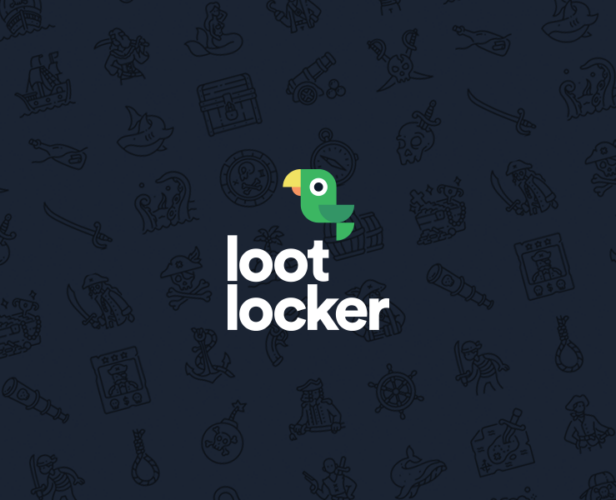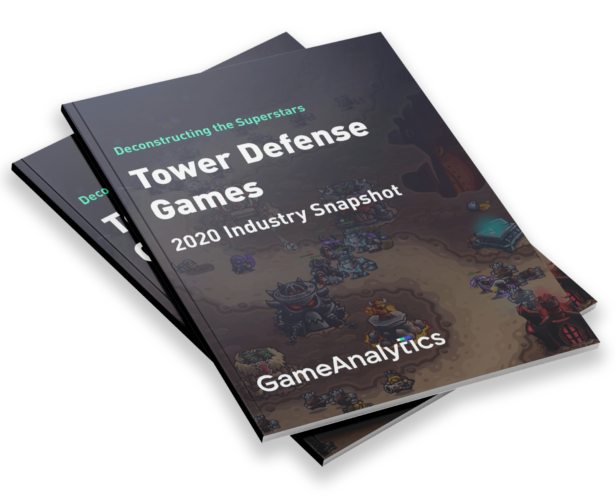Category
Guides
#Guides
The Hypercasual Playbook: Fast Prototyping
This post and report was originally written by Homa Games. You can check out the original here. Whether you are participating in a jam or just in your daily game creation practice, building a functional, testable prototype ASAP is essential. First, because you want to be able to test your ideas before investing too much time and resources on them. Second, because in the fast-paced, highly competitive Hypercasual world, you don’t want to let the latest trends slip away or see your genius concepts developed by the competition. When it comes to game design, there are elements like core game mechanics and dynamics that need to be there from the beginning, no matter how simple your prototype is. If you are thinking Hypercasual, you also want your games to be satisfying from the start, so the visual part and the...
#Guides
Developers Assemble – How to Find and Hire a Game Dev Team
Think of your potential team like the Avengers, but with less spandex (although that’s completely up to you). You need a mix of specific skills and people who get on well as you’re likely to be working together very closely, for some time. And you’re also going to be paying them, so you need to make sure they understand your vision and how you want to deliver it. Don’t worry, help is at hand – here’s our advice on how to find the very best game development superheroes. Before you start recruiting The first thing you’ll need to think about is the type of game you’re building. Ask yourself the following four questions: 1. What technology does my game need? This will give you an idea of what you need to look for when it comes to technical expertise in...
#Guides
Picking a Backend – Why It’s Vital, and How to Pick One
That’s a fairly obvious statement. Lavish visuals and meticulous game design are nothing without the likes of quality code and robust AI. But there’s another layer that sits behind everything else that’s equally important – particularly in the era of games as live entities. Simply put, you absolutely need a quality backend for any connected game to thrive. That’s true whether you have online multiplayer to consider, a connected user community to serve, or the likes of seasonal events and updates to consider. Equally, an intuitive backend can both accelerate and optimize your game development workflows, making the likes of achievements and social integration, leaderboard implementation, or in-game currency creation a trivial task. If any of those factors are part of your game, a backend is arguably as important as your chosen engine. Can I make my own backend? It...
#Guides
Access All Areas: How to Make Your Game More Accessible
As developers, accessibility is often one of the last things we think about – that’s if we think about it at all. Which is a shame, because we could be alienating a huge group of players. The good news is that making a mobile game more accessible really isn’t difficult. Hang on – what’s accessibility? Before we get into the details, let’s talk about what accessibility actually means for developers. It’s about designing apps that all people can easily use, regardless of whether or not they have a disability. So that’s things like including subtitles for the deaf or hard of hearing, or adding options for people who are visually or cognitively impaired (among other things). Simple, right? And when you look at it like this, it’s a bit of a no-brainer. Why wouldn’t you want the widest range of people...
#Guides
Making a Hyper-Casual Game? Here’s 5 Common Mistakes to Avoid
Editors note: This article was originally crafted by Sarah D. Vries, Content Creator at Coda Game. You can find the original piece here. The hyper-casual gaming industry is constantly evolving, requiring developers to be on top of trends and the latest gaming practices to remain competitive. Like honing any craft, it’s a constant work in progress and many studios often end up making common mistakes that can easily be avoided. Thankfully at Coda, we’ve had extensive experience working with developers and studios of all sizes. From our experience, we’ve compiled a list of the top five common mistakes that hyper-casual developers make and how best to avoid them when creating your next game. 1. Getting the difficulty of levels wrong Hyper-casual games are known for their simple nature and the ability for gamers of any level to play. One common...
#Game Design
The Voodoo Art Manual: How to Make Effective Game Art in Hyper-casual
Editor’s note: This article was originally published by Voodoo. You can read the original on their blog here. The brand new Voodoo Art Manual is now available for all partner studios on our Publishing Platform. It contains a concrete and practical guide on how to create effective and engaging game art in hyper-casual. We know that many of the studios we work with don’t always have dedicated game artists in their teams, and that it is often created by developers using the help of existing tools on Unity. Art, however, is an essential element of your game. It makes or breaks both the clarity of your gameplay and the user’s experience. Without effective art, the success of your game lies in the balance. The Voodoo Art Manual was created to maximize your chances of success in the prototyping phase. Whether you’re an experienced...
#Data & Analytics
Left or Right? How Data Warehouses Make it Easy to Make Decisions
Deciding between two different courses of action is perhaps the hardest part of running any business. Recently we wrote about how data warehouses can give you insights, trends and information. Everything you need to make informed decisions. But what sort of decisions do they help with? How do you actually take that insight and make practical choices? In this article, we’re going to talk through nine decisions you might need to make. And how a data warehouse can help. Why do studios and publishers use data warehouses? Most hit studios and publishers have a portfolio of games. A data warehouse brings together the data from across them all and converts it into a format they can search through. With more data, they can spot trends. Knowing the trends, they can fix bugs, optimize their ads, see which ideas perform the...
#Guides
Sub-Genre Snapshot: Tower Defense Games
We break down the top KPIs that Tower Defense developers should be aiming for, and reveal a few of the rising superstars that entered the market in 2020. What’s inside? Using aggregated data from our network of games, we’re dissecting the industry at a sub-genre level. All to bring you more actionable and granular insights to better your game development. Stats for key metrics Aggregated data from 134k+ games for all key metrics, including retention, ARPDAU, and more. New Superstar TD games Ranking data for over 200k+ games, with over 100k tagged with sub-genres. Secrets behind the genre A behind-the-curtain look at what makes Tower Defense games so successful.
#Guides
How to Create a Press Kit for Your Mobile Game (and Why You Really Should)
If you’re a mobile game developer, you want the press to talk about your game. It’s free advertising, and who wouldn’t want that? Creating a press kit is how you make it easy for the press to talk about your game, and to show it in its most positive light. If you previously thought ‘press kit’ was something you asked your dry cleaners to do after a football game, this blog’s for you. Here’s a quick introduction to press kits – how to create them and put them to use. What is a press kit? It’s a collection of text and visuals that gives a journalist or website everything they need to write about your game. You’re basically saying to them: “Oh, you want a game to write about? Well, you won’t need any research to write about my game...
#Guides
6 Tips for Running a Game Jam: a Guide from AudioMob
Editor’s Note: AudioMob, an advertising platform dedicated to non-interrupting audio ads, recently ran their first (of many) game jams. Here’s what they learned from the experience. As 2020 came to a close, we ran a game jam that encouraged highly creative development teams to explore integrating a new audio ad format into mobile games. The jam was an amazing experience for us, one in which we learned a lot. Hosting certainly took a significant investment of effort and time. But it was worth it, bringing us and something we’d recommend any game tech, service, or publishing company consider doing. With that in mind, we wanted to share what we learned, in case you were curious about what happens behind the scenes (or were thinking of running one yourself!). Running a game jam was hugely rewarding, of course. We got to...
#Guides
How to Make an Idle game: Everything You Need to Know About Incremental Mobile Games
Idle games present gamers with an opportunity to play games with long-term targets, test their problem-solving skills and gain incremental rewards over time. This sub-category of games can have impressive retention rates and session length when compared to other types of games. A GameAnalytics study revealed that idle game players have a stickiness of 18%, compared to 10.5% for other hyper-casual titles. They also show a higher number of sessions per day and a higher average session length (8 minutes). This article shares the essential insights you need when learning how to make an idle game. What is an idle game? Idle games are often categorized as hyper-casual games due to their ease of use and accessibility. However, they differ greatly from popular hyper-casual games such as Voodoo’s 5 Hoops and Ketchapp’s Origame. Idle games, which are also known as...
#Guides
Your 101 guide to email marketing to mobile apps
Email marketing is a critical part of a healthy overall marketing strategy. A study by the UK-based Direct Marketing Association (DMA) found that for every £1 you spend on email marketing, you can expect a return of £42. Additionally, Statista found that 49% of consumers like receiving weekly promotional emails from their favorite brands. But there are some common mistakes to avoid when adopting email marketing. In this guide to email marketing for mobile applications, we are going to: Define what email marketing means for mobile applications Discover why email marketing is important Outline how to build your email marketing strategy Share best practices for marketing your mobile apps via email What is an email marketing strategy? Marketing emails can be used to send regular newsletters, essential updates, and promotional offers to your users. You can be hugely successful at...
#Data & Analytics
How to calculate ARPU, ARPPU, ARPDAU and more
Metrics like Average Revenue Per User (ARPU) or Daily Active Users (DAU) are like the coins you collect in a platformer: you want to rack them up, they’re sometimes fiddly to find and if you get enough they’ll give your game an extra life. Knowing these figures helps you figure out what you need to improve, predict how much you’ll earn, set yourself realistic targets and – fingers crossed – persuade investors to give you funding. So how do you calculate and use them? This is the first part in our series on key metrics you’ll need to know and today we’re going to cover: DAU, ARPU, ARPPU and ARPDAU. How to calculate DAU: Daily Active Users Count the number of unique players doing any action in your app on each day. 1. You’ll need to decide on what defines...












